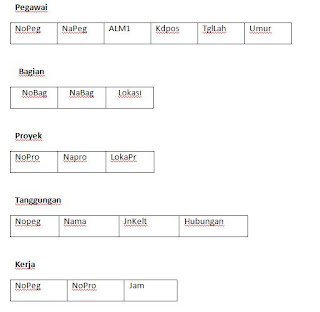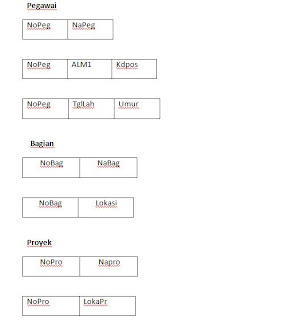FIRST OBSERVATION AND ANALYSIS REQUIREMENT
Investigational System Concept
The problem is the gap in goal difference between the system and the actual system conditions.
Many reports on the detection problem may not be real,because of several things:
1. A goal that is too ideal, too difficult to achieve
2. Lack of resources and or attitude
3. Measurement system is less accurate
4. System that is the purpose behind Goal system that is out of date
5. The difference between the system and the system idel while
Problem solving:
1. Description of the condition of the system that runs through it in detail
2. Getting a consensus that the ideal system
3. Developed several alternative
4. select the best alternative
For the purpose of the investigation indicate that problems are actually happening
Constraints in the system of investigation
Investigations in several problems that often appear are:
1. Time
2. Cost
3. Knowledge
4. Politic
5. Intervention
Recommendations
Results of the investigation is a recommendation that contain, among others:
- Not to take any action because they are not finding a problem
- Perform system maintenance for a small problem.
- Improving the skills or the ability to use the system
- Consider modifications to the system in full
-Putting the problem to occur in the development plan system is carried out immediately
Investigation Tactics
Why we need tactics?
- Finding a problem for all
- Knowing for the emergence of problems
- for Determining the right solution
Investigative tactics need to be done by all elements of the system in order to receive offer solutions without disrupting their activities.
Some of the tactics that can be done:
- Listen to the user's system
- Don't give the early breakthrough
- Compare the stories of some of the user system the same case
- Note the logical inconsistency problem
Investigation Technique
Direct (internal):
1. The questionnaire
2. discussion
3. Observation
Indirect (external):
1. Flow of the procedure
2. Reviewing documents
3. Sample
4. Tabular
Current System Description
1. Inputs
2. Outputs
3. Files
4. Data elements
5. Transaction and document action volume
6. Data flow diagrams
Requirement Analysis
phase of intensive interaction between the systems analyst with the end user where the system shows the development team expertise to get feedback and trust so that the user get a good participation.
4 goals want to achieve:
1. Explain the complete system
2. Information system that describes the ideal
3. Bringing information system to the ideal conditions at this time with attention to resource constraints
4. Providing encouragement to the user's confidence in the system development
Method Needs Analysis
1. discussion
2. Questionnaires
3. Observation
4. Procedure Analysis
5. Observation documents
Resource constraints
1. Time
2. Money
3. Expertise
4. Technology
5. External factors
Needs Analysis Document
- Analysis direction: Relationships with end users, the observation process, problems in data collection
- The user needs: The need actual, reporting requirements, training needs and the influence of the new system
- System constraints: Explain the constraints of time and cost, expertise, technology, and
-external factors
- Documents such as data collection instruments, statistical consensus, the logical flow of
-data and phisik, data elements in the initial data dictionary.
Generating Systems Alternatives
How do I approach the condition of the system at this time with the condition of the ideal system?
- Creating an alternative to solve the problem of information system
- Best alternative is applied wisely
Options Strategies
- Distributed versus centralized processing
Changes in decision-making information from the centralized data processing to the end user Decentralized responsibility center
- Integrated versus dispersed database
System designer must consider the data are entered in the data base and into the file
- Surround Strategy of System Development
About important environmental strategy in the case of company takeovers because the
information system of other companies may vary with the company at this time.
Generating Systems Alternatives
Strategy Options
Options is done before the design operational
Designing Operational Options
Options can be grouped into the design
1. Input
a. Online Vs Off Line Data Entry
b. Keyed Vs Machine Readable Data Entry
c. Centralized Vs Decentralized Data Entry
2. Processing
a. Batch Vs Realtime record update
b. Sequential Vs Direct Access to records
c. Single Vs Multiple User update of records
3. Output
a. Traditional Vs Turn Around Documents
b. Structured Vs Inquiry based reports
Selecting The Proper System
Compare tactics: systems based on the comparison of costs and benefits relative; There are 3 ways the system "A" said the system is superior to the other if :
- "A" has a cost lower than "B" and their profit same.
- "A" has a cost lower than "B" and "A" result in more profits from the "B"
- "A" and "B" have the same costs but the resulting benefit "A" more.
Several Comparative Method System
1. Break Even point Analyisis
2. Payback Period
3. Discounted PayBack period
4. Internal Rate of Return
Cost category
1. Hardware
2. Software
3. People
4. Suppliers
5. Teleccommunications
6. Physical sites
Cost details
Comparing the cost of information systems through the life of the system, analysts projected the cost changes for the future and there are 3 models cost information system, namely Linear, and exponentially Step Function.
Information system cost happen in one time and be able happen continuous.
- Cost information system that occur only once the cost ontime and development costs that occur during the development of the system.
- Cost information system that occur continuously among reccuring cost and operational cost where the cost of this is the case when the operating system information every day.
The Information System Factor
Qualitative factors that lead the performance information system that both of them:
1. Reduce errors
2. Reducing the time to fix errors
3. Reduce the response time from the workstation alternative
4. Accelerate the time of providing information
5. Improve security systems
6. Propagate update records on the source
7. Increasing user satisfaction
Company Strategy Factor
1. Customer satisfaction
2. Sales increased
3. Consumer and vendor commitment
4. Information marketing products
Representation Learning System
1. Make short presentations
2. Reduce the detail description techniques
3. represented clearly with visual tools
4. If using a model using a tool such as a laptop so that more informative
5. Emphasize the benefits of the proposed system with some alternative information that is
appropriate conditions experienced by the company.
Decision to continue or No
- If the company decided to develop the information system, the department will do next, namely the System Design Process.
- If then the System Development Life Cycle (SDLC) will be terminated.
- Often the problem will be found with the system and the study and top management will usually ask for the re-employment system to study.
- Model will describe some of the stages of the repeated and sometimes the information will make a decision before the repeat stage system of study.
- With the alternative, the decision to repeat a previous stage SDLC or not called Go - No-Go Decision.













